General Style Advice & Trends: Navigating the Ever-Evolving World of Personal Expression
[1]Style, in its broadest definition, is the distinctive manner in which something is done or created. When applied to personal expression, it encompasses the choices we make in clothing, accessories, grooming, and even our overall demeanor. It’s a language we use to communicate our personality, values, and aspirations to the world, often without uttering a single word. While trends come and go, understanding the fundamental principles of style allows us to navigate the ever-evolving landscape of fashion with confidence and create a personal aesthetic that is both authentic and timeless.
This article delves into the core tenets of general style advice, exploring the building blocks of a strong personal style foundation. We will examine the importance of self-awareness, understanding body types, and mastering color theory. Further, we will navigate the often-turbulent waters of fashion trends, offering guidance on how to incorporate them thoughtfully while maintaining a consistent and individual voice. Finally, we will touch upon the ethical considerations of fashion consumption and the increasing importance of sustainability.
I. Building a Foundation: Core Principles of Style
A. Self-Awareness: Knowing Yourself is the Key
The cornerstone of any successful style journey is self-awareness. This involves understanding your personality, lifestyle, values, and what truly makes you feel comfortable and confident. Before blindly following trends, take time to reflect on these fundamental aspects of yourself.
-
Personality: Are you introverted or extroverted? Creative or practical? Your clothing should reflect your inner self. A flamboyant outfit might feel empowering for a bold personality, while a minimalist ensemble could resonate more deeply with a more reserved individual. [2]
-
Lifestyle: Consider your daily activities. What does your work entail? How do you spend your free time? A wardrobe appropriate for a corporate office will differ significantly from one suitable for a freelance artist or a stay-at-home parent. Choosing clothing that aligns with your lifestyle ensures practicality and comfort. [3]
-
Values: What is important to you? Do you prioritize comfort, sustainability, ethical production, or making a statement? Your clothing choices can reflect these values. Opting for eco-friendly fabrics, supporting fair-trade brands, or choosing timeless pieces over fast fashion are all ways to align your style with your ethical compass. [4]
-
Confidence: What makes you feel good about yourself? What pieces in your wardrobe do you always reach for? Identify the elements that contribute to your confidence and incorporate them into your overall style. Comfort and confidence are inextricably linked; when you feel good in what you’re wearing, you radiate a positive energy that enhances your overall appearance. [5]
B. Understanding Your Body Type: Dressing for Your Shape
Understanding your body type is crucial for choosing clothing that flatters your figure and highlights your best features. While there is no single “ideal” body type, learning how different silhouettes and styles interact with your body can empower you to make informed choices.
Common body type classifications include:
- Rectangle (Straight): Shoulders, waist, and hips are roughly the same width. The goal is to create curves and definition.
- Triangle/Pear: Hips are wider than shoulders. Balance is achieved by drawing attention to the upper body.
- Inverted Triangle: Shoulders are wider than hips. The focus is on balancing the upper body with the lower body.
- Hourglass: Shoulders and hips are roughly the same width, with a defined waist. Emphasizing the waist is key.
- Apple/Oval: Fuller midsection with narrower shoulders and hips. Creating a more defined waist and drawing attention to the extremities are helpful.
It’s important to remember that these are just guidelines, and many individuals fall somewhere between categories. Experimentation is key to finding what works best for your unique shape. [6]
- Silhouette Matters: Pay attention to the overall shape of your clothing. A-line skirts, wrap dresses, and tailored jackets can flatter a variety of body types. Avoid overly baggy or overly tight clothing, as they can distort your figure.
- Proportion is Key: Use clothing to create balanced proportions. If you have long legs, you can wear longer tops. If you have a shorter torso, high-waisted bottoms can elongate your legs.
- Consider Fabric: The fabric’s weight and drape can significantly impact how clothing looks on your body. Stiffer fabrics can add structure, while drapier fabrics can create a softer silhouette.
- Don’t be Afraid to Experiment: The best way to understand what works for your body type is to try different styles and silhouettes. Don’t be afraid to step outside your comfort zone and experiment with new shapes and fabrics.
C. Mastering Color Theory: The Power of Hue
Color plays a significant role in how we perceive ourselves and how others perceive us. Understanding the basics of color theory can help you create harmonious and flattering outfits.
- The Color Wheel: Familiarize yourself with the color wheel, which shows the relationships between different colors.
- Color Harmony: Learn about different color harmonies, such as complementary (colors opposite each other on the color wheel), analogous (colors next to each other), and monochromatic (different shades of the same color).
- Skin Tone: Consider your skin tone when choosing colors. Warm skin tones (with yellow undertones) tend to look best in warm colors (reds, oranges, yellows), while cool skin tones (with blue undertones) tend to look best in cool colors (blues, greens, purples).
- Personal Preference: Ultimately, the best colors for you are the ones you feel confident and happy wearing. Don’t be afraid to break the rules and experiment with different color combinations. [7]
- Color Psychology: Be mindful of the psychological effects of color. Red can evoke passion and energy, while blue can create a sense of calm and tranquility. Use color to convey the message you want to send.
- Neutrals as a Foundation: Build a wardrobe around a core of neutral colors (black, white, gray, navy, beige) that can be easily mixed and matched. Then, add pops of color with accessories and statement pieces.
II. Navigating Trends: Embracing the New While Maintaining Authenticity
Fashion trends are cyclical, constantly evolving, and often influenced by cultural shifts, social movements, and technological advancements. While it can be tempting to jump on every bandwagon, it’s crucial to approach trends with a discerning eye.
A. Understanding the Nature of Trends:
- Trend Cycles: Recognize that trends have a lifespan. What’s popular today may be outdated tomorrow.
- Influence of Media: Be aware of how media (fashion magazines, social media, influencers) shapes and promotes trends.
- Personal Interpretation: Trends should serve as inspiration, not as rigid rules. Adapt them to your personal style and body type. [8]
B. Integrating Trends Thoughtfully:
- Assess Applicability: Before adopting a trend, ask yourself if it aligns with your personality, lifestyle, and body type.
- Start Small: Introduce trends gradually through accessories, shoes, or a single garment.
- Invest Wisely: If you love a trend and believe it will have staying power, consider investing in a higher-quality piece.
- Mix and Match: Combine trendy pieces with classic staples to create a balanced and timeless look.
- Don’t be a Slave to Trends: Avoid blindly following trends that don’t suit you or that you don’t feel comfortable wearing. [9]
- Consider Longevity: Prioritize trends that align with your existing wardrobe and that you can see yourself wearing for more than just one season.
C. Identifying Timeless Pieces: Building a Wardrobe That Lasts
While trends come and go, certain garments remain eternally stylish and versatile. Investing in these classic pieces will provide a solid foundation for your wardrobe and allow you to easily incorporate trends without sacrificing your personal style.
- The Little Black Dress: A timeless and versatile piece that can be dressed up or down.
- The Classic White Shirt: A wardrobe staple that can be paired with jeans, skirts, or trousers.
- Tailored Trousers: A sophisticated and professional alternative to jeans.
- A Well-Fitting Blazer: Adds polish and structure to any outfit.
- A Trench Coat: A stylish and practical outerwear option.
- A Cashmere Sweater: A luxurious and comfortable layering piece.
- Dark Wash Jeans: A versatile and durable denim option.
- Neutral Pumps or Flats: Classic footwear options that can be worn with a variety of outfits. [10]
- A Leather Jacket: Adds an edgy and cool vibe to any look.
III. Ethical Considerations and Sustainable Style
The fashion industry has a significant impact on the environment and on the lives of garment workers. As consumers, we have a responsibility to be mindful of our purchasing habits and to support brands that prioritize ethical and sustainable practices.
A. Understanding the Impact of Fast Fashion:
- Environmental Concerns: Fast fashion contributes to pollution, waste, and resource depletion.
- Labor Practices: Garment workers are often subjected to low wages, unsafe working conditions, and long hours.
- Consumerism: Fast fashion encourages overconsumption and a disposable mindset.
B. Embracing Sustainable Style:
- Buy Less, Choose Well: Prioritize quality over quantity and invest in pieces that will last.
- Shop Secondhand: Give pre-owned clothing a new life.
- Support Sustainable Brands: Look for brands that use eco-friendly materials, ethical production practices, and transparent supply chains.
- Repair and Alter: Extend the life of your clothing by repairing tears, replacing buttons, and altering ill-fitting garments.
- Rent or Borrow: Consider renting or borrowing clothing for special occasions instead of buying new.
- Upcycle and Repurpose: Get creative and transform old clothing into new items.
- Wash Clothes Less Frequently: Washing clothes less often saves water and energy and helps to extend the life of your garments.
- Air Dry Clothes: Air drying clothes is a more sustainable alternative to using a dryer.
- Dispose of Clothing Responsibly: Donate unwanted clothing to charity or recycle it through textile recycling programs. [11]
C. Ethical Considerations in Fashion Choices:
- Fair Trade: Support brands that ensure fair wages and safe working conditions for garment workers.
- Transparency: Look for brands that are transparent about their supply chains and production processes.
- Animal Welfare: Avoid buying clothing made from animal products like fur, leather, and down.
- Consider the Origin: Research where your clothes are made and the labor practices of the companies involved.
- Support Local Artisans: Buying from local artisans supports small businesses and promotes traditional crafts.
IV. Grooming and Accessories: Completing the Look
Style extends beyond clothing. Grooming and accessories are essential components of a polished and well-put-together look.
A. Grooming Essentials:
- Hygiene: Maintaining good hygiene is fundamental. This includes showering regularly, brushing your teeth, and keeping your nails clean.
- Hair Care: Choose a hairstyle that suits your face shape and hair type. Keep your hair clean, trimmed, and well-styled.
- Skincare: Develop a skincare routine that addresses your specific skin concerns.
- Makeup (if applicable): Use makeup to enhance your natural features and create a polished look.
- Facial Hair (if applicable): Keep facial hair neatly trimmed and well-groomed. [12]
B. Accessorizing with Purpose:
- Jewelry: Choose jewelry that complements your outfit and reflects your personal style.
- Scarves: Add a pop of color or texture to your outfit with a scarf.
- Belts: Define your waist and add visual interest to your outfit with a belt.
- Hats: Protect yourself from the sun and add a stylish touch with a hat.
- Bags: Choose a bag that is both functional and stylish.
- Shoes: Choose shoes that are comfortable, stylish, and appropriate for the occasion.
- Eyewear: Select eyewear that complements your face shape and personal style. [13]
C. The Power of Confidence and Attitude:
Ultimately, the most important accessory is confidence. Wear your clothing with pride and let your personality shine through. A positive attitude and a genuine smile can elevate any outfit. Style is not just about what you wear; it’s about how you wear it. [14]
V. Conclusion: Cultivating a Personal Style That Evolves with You
Developing a personal style is an ongoing journey of self-discovery and experimentation. It’s about understanding your personality, lifestyle, and body type, mastering the basics of color theory, and thoughtfully incorporating trends while maintaining a core foundation of timeless pieces. Embrace the principles of ethical and sustainable fashion, and remember that grooming and accessories play a crucial role in completing the look. Most importantly, cultivate confidence and let your unique personality shine through.
As you navigate the ever-evolving world of fashion, remember that style is a form of self-expression. It’s an opportunity to communicate who you are to the world, without saying a word. Embrace the freedom to experiment, to break the rules, and to create a personal aesthetic that is both authentic and empowering. Your style should be a reflection of your inner self, constantly evolving and adapting as you grow and change. There is no right or wrong answer; the most important thing is to feel comfortable and confident in your own skin. Embrace the journey, have fun, and let your style be a celebration of your unique individuality.
[15]
References
[1] Merriam-Webster. (n.d.). Style. In Merriam-Webster.com dictionary. Retrieved from https://www.merriam-webster.com/dictionary/style [2] Jung, C. G. (1921). Psychological types. Routledge. [3] Roach-Higgins, M. E., & Eicher, J. B. (1992). Dress and identity. Clothing and Textiles Research Journal, 10(4), 1-8. [4] Fletcher, K. (2008). Sustainable fashion and textiles: Design journeys. Earthscan. [5] Dunning, D. (2005). Self-insight: Roadblock to judgment and decision making. In L. L. Martins (Ed.), The wisdom paradox: How your mind can deceive you (pp. 61-88). Wiley. [6] Brown, L., & Rice, B. (2018). Body image: Understanding and action. John Wiley & Sons. [7] Itten, J. (1970). The elements of color. Van Nostrand Reinhold. [8] Simmel, G. (1904). Fashion. International Quarterly, 10, 130-155. [9] Entwistle, J. (2015). The fashioned body: Fashion, dress and modern social theory. John Wiley & Sons. [10] Wilson, E. (2003). Adorned in dreams: Fashion and modernity. Rutgers University Press. [11] Cline, E. L. (2013). Overdressed: The shockingly high cost of cheap fashion. Penguin. [12] Swami, V., & Furnham, A. (2008). The psychology of physical attraction. Routledge. [13] Lurie, A. (1981). The language of clothes. Random House. [14] Kaiser, S. B. (1997). The social psychology of clothing: Symbolic appearances in context (2nd ed.). Fairchild Publications. [15] Lipovetsky, G. (1994). The empire of fashion: Dressing modern democracy. Princeton University Press.

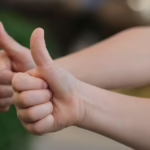

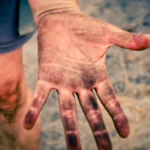










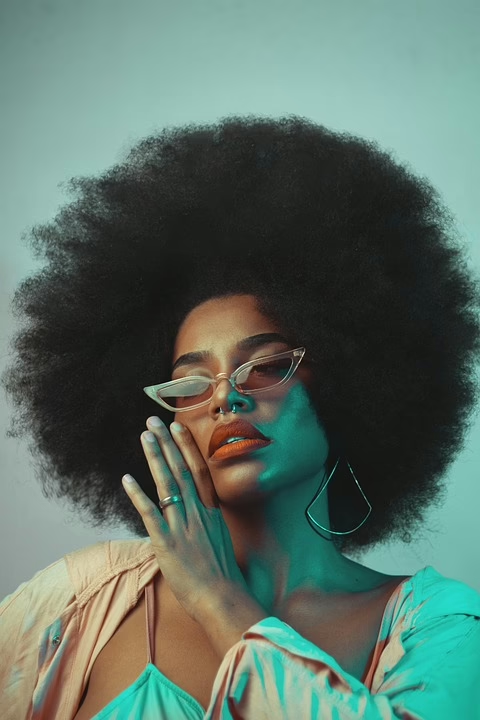
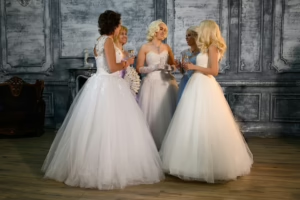
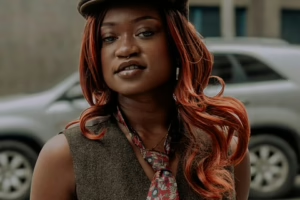

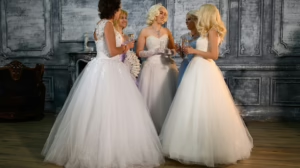






Add Comment